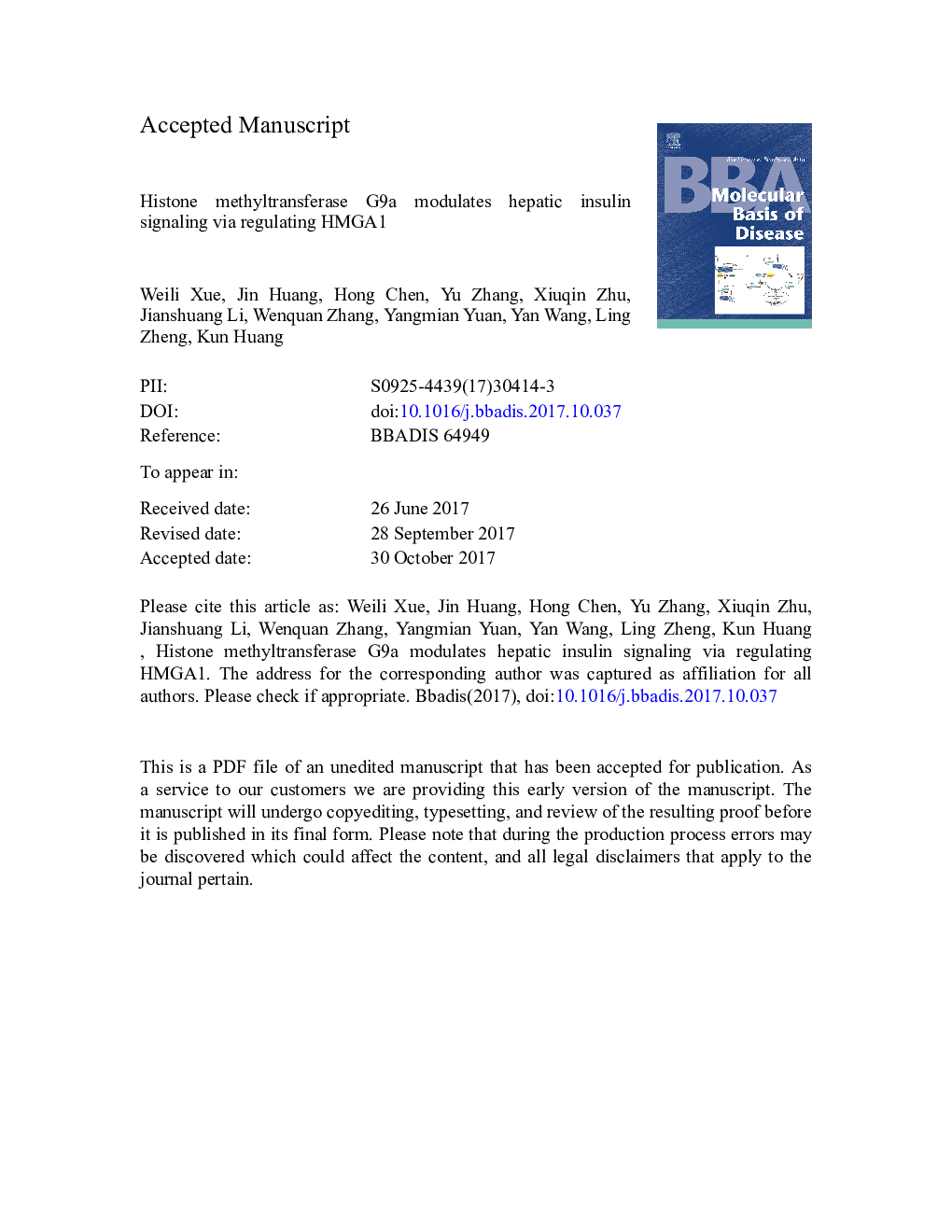| Article ID | Journal | Published Year | Pages | File Type |
|---|---|---|---|---|
| 8258686 | Biochimica et Biophysica Acta (BBA) - Molecular Basis of Disease | 2018 | 38 Pages |
Abstract
Hepatic insulin sensitivity is critical for glucose homeostasis, and insulin resistance is a fundamental syndrome found in various metabolic disorders, including obesity and type 2 diabetes. Despite considerable studies on the mechanisms of hepatic insulin resistance, the link between epigenetic regulation and the development of insulin resistance remains elusive. Here, we reported that G9a/EHMT2, a histone methyltransferase, was markedly decreased in the liver of db/db mice and high-fat diet (HFD)-fed mice. In cultured hepatic cells, G9a knockdown resulted in downregulation of insulin receptor, p-AKT and p-GSK3β; while upon upregulation, G9a prevented the palmitic acid- or glucosamine-induced insulin resistance by preserving the normal level of insulin receptor and integrity of insulin signaling. Further mechanistic study suggested that G9a regulated the expression level of high mobility group AT-hook 1 (HMGA1), a key regulator responsible for the transcription of insulin receptor (INSR) gene. Overexpression of HMGA1 normalized the impaired insulin signaling in G9a knockdown hepatic cells. Importantly, in db/db mice, restoring the expression level of G9a not only upregulated HMGA1 level and improved the impaired hepatic insulin signaling, but also alleviated hyperglycemia and hyperinsulinemia. Together, our results revealed a novel role for G9a in modulating insulin signaling, at least in part, depending on its regulatory function on HMGA1.
Keywords
Related Topics
Life Sciences
Biochemistry, Genetics and Molecular Biology
Ageing
Authors
Weili Xue, Jin Huang, Hong Chen, Yu Zhang, Xiuqin Zhu, Jianshuang Li, Wenquan Zhang, Yangmian Yuan, Yan Wang, Ling Zheng, Kun Huang,
